Habitat Protected 10 Years Ago Expands with a Strategic Purchase
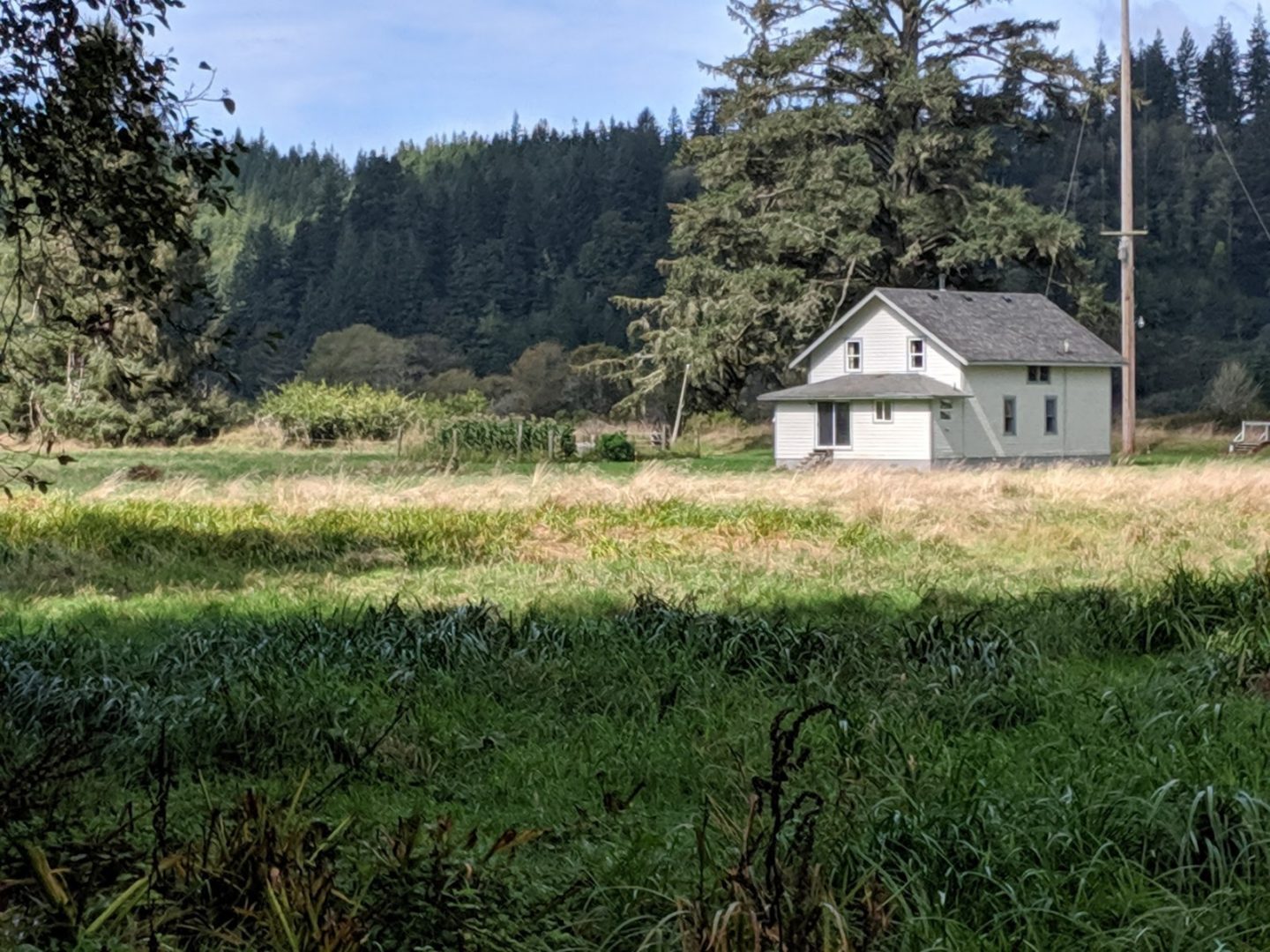
In 2010, we acquired a 210-acre property between Florence and Mapleton known as Waite Ranch. This land is adjacent to Highway 126 and just upstream of Cushman Landing. It’s identified as a conservation priority because of the variety of habitat types that could be restored there. Tidal estuary and marshland are home to an abundance of fish and wildlife.
There are few of these types of habitats left on the Central Oregon Coast.
Nearly 1,000 acres of protected conservation lands surrounds Waite Ranch, which makes it an excellent candidate for restoration work. McKenzie River Trust felt the opportunity was too great to pass up, and we used our success and resources to buy the land and work alongside a variety of partners working to protect and restore coastal habitat.
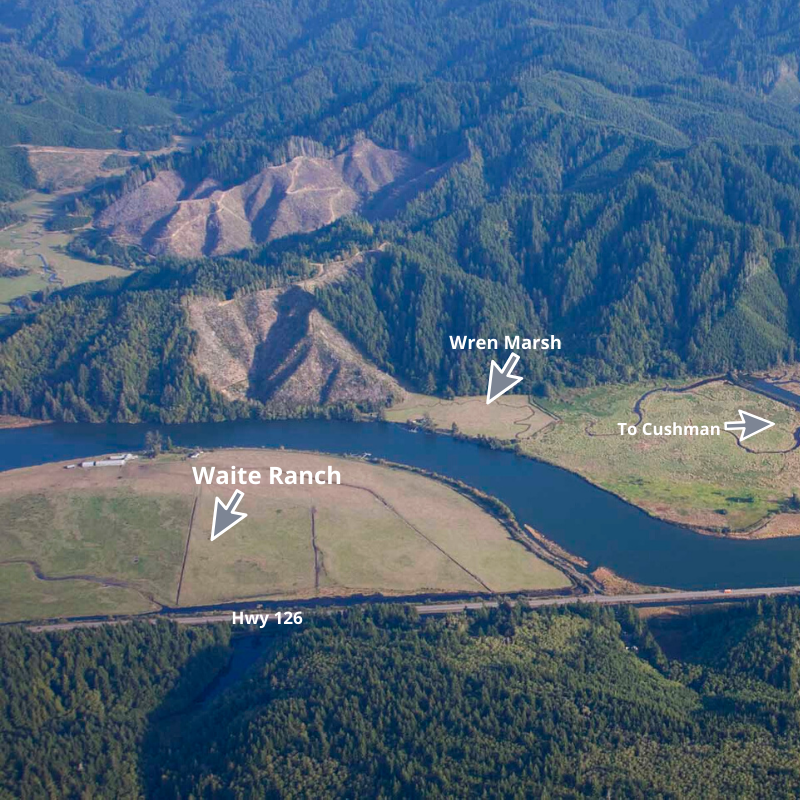
On September 25th, the Trust acquired Wren Marsh, an 8-acre parcel of land across the Siuslaw River from Waite Ranch that fills one of the last remaining gaps in this conservation complex and significantly benefits restoration efforts. The Waite Ranch Restoration Project will benefit from critical cost savings thanks to this purchase. Because of the acquisition, we can remove powerlines serving Wren Marsh that cross Waite Ranch instead of re-routing them.
A Good Neighbor
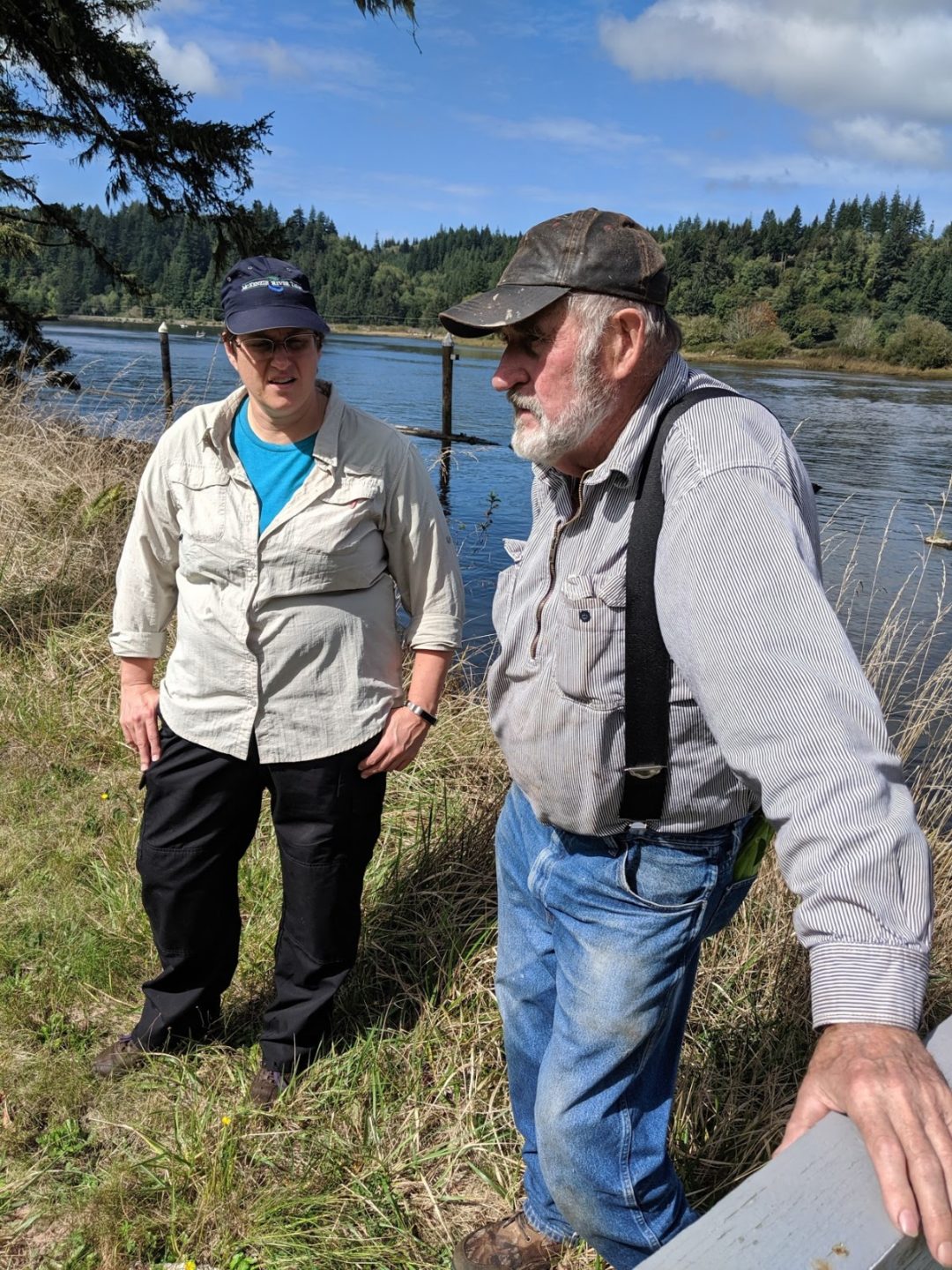
Wren Marsh had been owned by Dick Fithian for nearly 30 years. Dick was deeply knowledgeable about the land and history of Wren Marsh and Waite Ranch, having spent much of his time as a kid visiting the land with members of the Waite family. When MRT bought Waite, Dick was there to lend a hand and an ear as MRT got to know the unique characteristics of land on the Siuslaw River. When Dick decided to sell Wren Marsh, we were grateful he chose us to continue the legacy of stewardship.
Restoring Tidal Swamp Land

The Siuslaw estuary is an idyllic marshy region; filled with the sound of frequent and varied birdsong.
Over the years, development caused estuaries like this to be diked, drained, and converted, eliminating habitat needed for young fish and shellfish to thrive. Studies from the 70’s and early 80’s first showed the important roles that estuaries play for fish. More recent local studies have shown the import role restoration can play in the recovery of our fisheries.
While there has been great success in preserving land in the Siuslaw estuary, areas like Waite Ranch and Wren Marsh remain degraded by blocked fish passage, loss of tidal channels, lack of habitat diversity, and poor water quality during summer months.
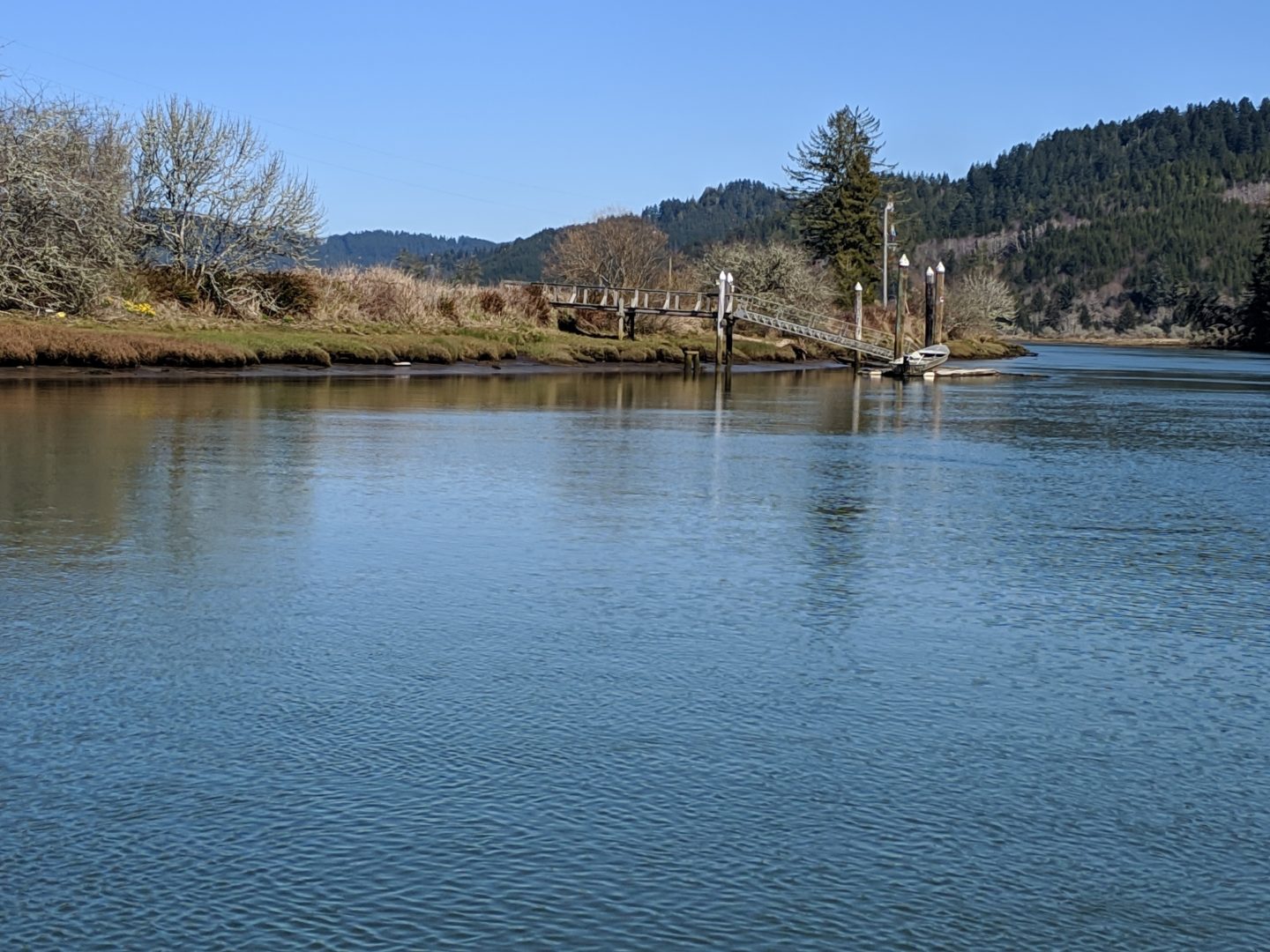
Approximately 200 acres of tidal estuary habitat are expected to result from planned restoration efforts, along with about 10 miles of tidal channel. This habitat could offer a home and refuge for many sensitive fish and wildlife species, including American bald eagles, shorebirds like the short billed dowitcher, and native fish such as coastal coho, steelhead, and Chinook salmon.
McKenzie River Trust on the Oregon Coast
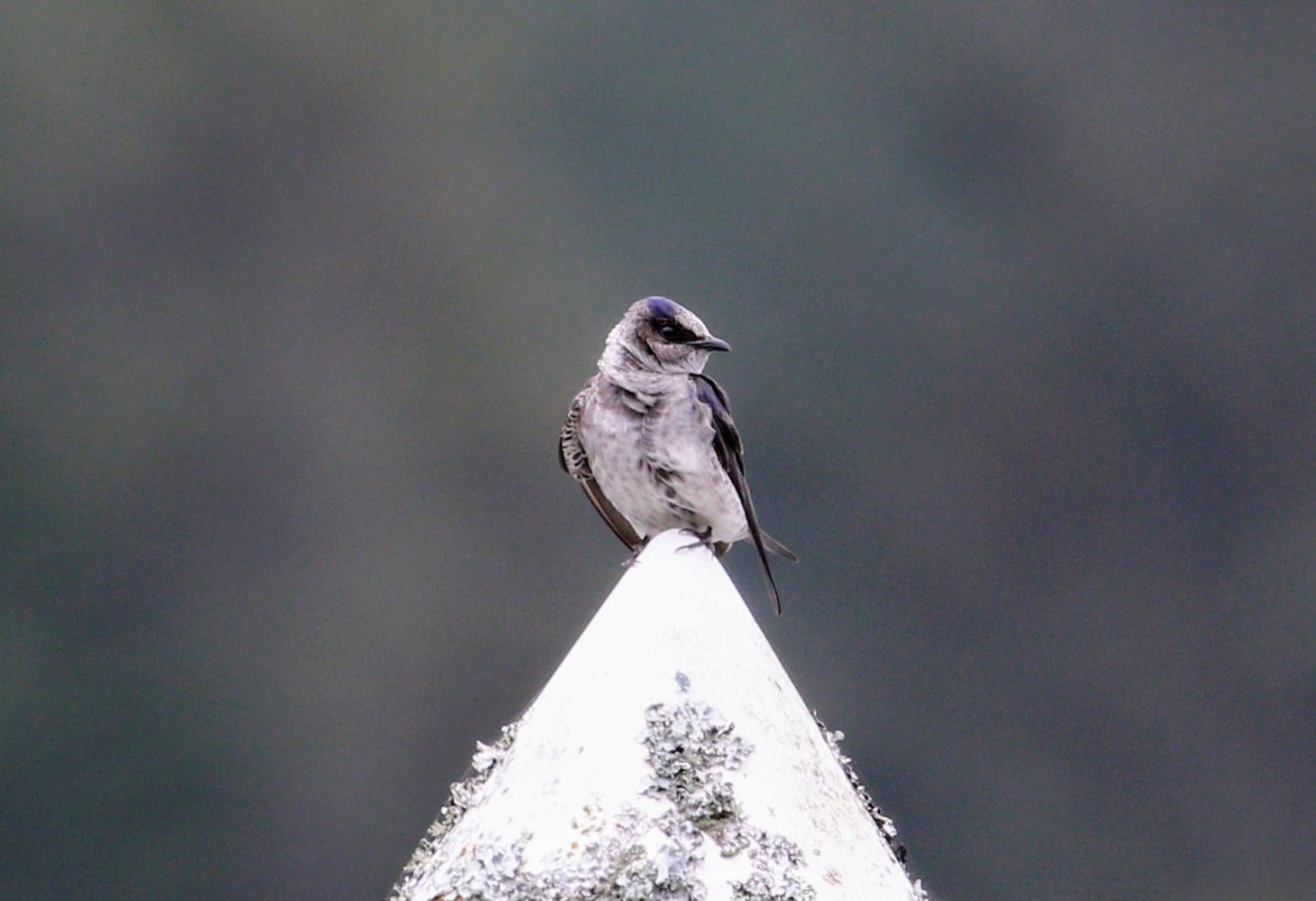
The success of our conservation work in the McKenzie River watershed brought McKenzie River Trust to lend a hand to other vital watersheds. Our first project on the central coast was in 2007 and we continue to protect more land in the region.
The Confederated Tribes of the Coos, Lower Umpqua, and Siuslaw Indians, the Siuslaw Watershed Council, and a network of government agencies are our partners in conservation in this region. Together, our knowledge, technical expertise, and flexibility expands the capability to preserve coastal lands and waters.
A no-interest loan to the Trust from local donors made this purchase possible. We are very grateful for the support of our members. We can expand our mission to help people protect and care for the lands and rivers they cherish in Western Oregon.
How You Can Help
We are looking for more strategic partners in connecting coastal community members to our lands and our work. Please encourage anyone you know to join. Next year, we will see more volunteer and tour opportunities to help connect our members to this vital estuary.
